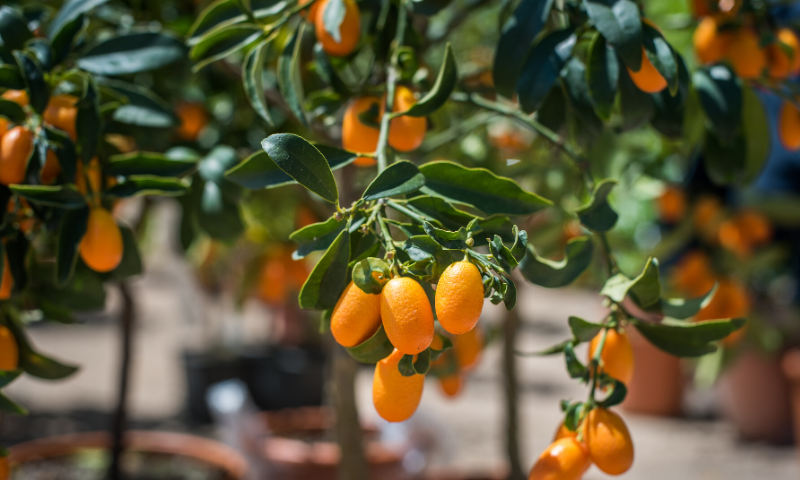Yates Account
Join now
Create a Yates account today!
Sign up to join the Yates Garden Club for monthly e-mails packed with seasonal inspiration, tips for success & exclusive promotions.
Plus if you’re a Garden Club member you can take part in the Yates Growing Community - a blog to share successes, get advice & win prizes in fun challenges along the way!

Forgot password
Enter the email address associated with your account, and we'll email you a new password.

Cumquats are known for their very tart citrus flavour and are most commonly used in jams, marmaldes and preserves. Many people also enjoy eating cumquats whole, including the fragrant skin, which can be sweeter than the flesh itself. There are several different varieties of cumquats, also called kumquats, including oval fruited ‘Nagami’ and round ‘Marumi’. There’s also a cumquat with both variegated leaves and fruit. Cumquats can also be very decorative trees, with their white fragrant flowers and brightly coloured fruit covering the trees from winter to early spring. Cumquats are often grown purely as ornamental trees, however marmalade makers will appreciate a basket of fruit!
How to grow Cumquats in a garden
- Choose a sunny spot with well drained soil. Enrich the soil with Yates Dynamic Lifter Organic Plant Food. If the soil is clay based, improve soil structure by adding gypsum and forking in well. In poorly drained areas, citrus can also be planted in a raised mound of free-draining soil.
- Dig the planting hole twice as wide and to the same depth as the root-ball. Remove the plant from the container, gently tease the roots and cut away any circled or tangled roots.
- Position in hole and backfill with soil, gently firming down. Form a raised doughnut shaped ring of soil around the outer edge of the plant's root zone. This helps keep water where it's needed. Always water in well after planting to settle the soil around the roots and keep the soil moist for several weeks while the new plant establishes.
- Mulch around the base with organic mulch like woodchip or pea straw, keeping it away from the trunk.
- Water deeply, once or twice a week, depending on weather conditions.
- During the growing and flowering/fruiting season, feed with Yates Thrive Citrus & Fruit Granular Plant Food. Throughout the year, apply Yates Thrive Natural Fish & Seaweed+ Plant Food Concentrate.

How to grow Cumquats in a pot
- Choose a pot at least 500mm wide. Position in full sun and fill with quality potting mix, such as Yates Nature's Way Organic Citrus & Fruit Mix. TIP: Consider placing the pot on wheels if you live in a cold area, so it can be easily moved inside or to a sunnier and more protected spot in winter.
- Remove the plant from the container, gently tease the roots and cut away any circled or tangled roots.
- Position in hole and backfill with potting mix, gently firming down. Water in well.
- Water deeply, 2-3 times during the week, depending on weather conditions.
- During the growing and flowering/fruiting season, feed weekly with Yates Thrive Citrus Liquid Plant Food. Throughout the year apply Yates Thrive Natural Fish Seaweed+ Plant Food Concentrate.
Growing tips
- If you’re short of sunny spots in the garden, grow citrus in pots that can be moved to take advantage of changing patterns of sunlight.
- In heavy clay soils, it’s best to put extra effort into soil preparation. To check if your soil needs work, dig a hole and pour a bucket of water into the hole – if it takes more than 30 minutes to disappear, then you will need to work your soil. Consider raising the level of the bed as much as possible, dig in gypsum and Yates Dynamic Lifter Organic Plant Food. Potted oranges should be grown in a good quality mix (such as Yates Nature's Way Organic Citrus & Fruit Mix) and moved into larger containers as they grow.
- Remove any small fruit that develop within the first two years - thinning excess fruit when they’re small will encourage better sized and tasting fruit to develop in the coming years.














Share
Share this article on social media